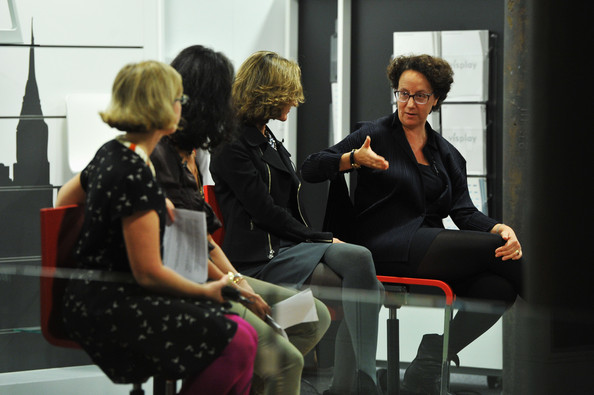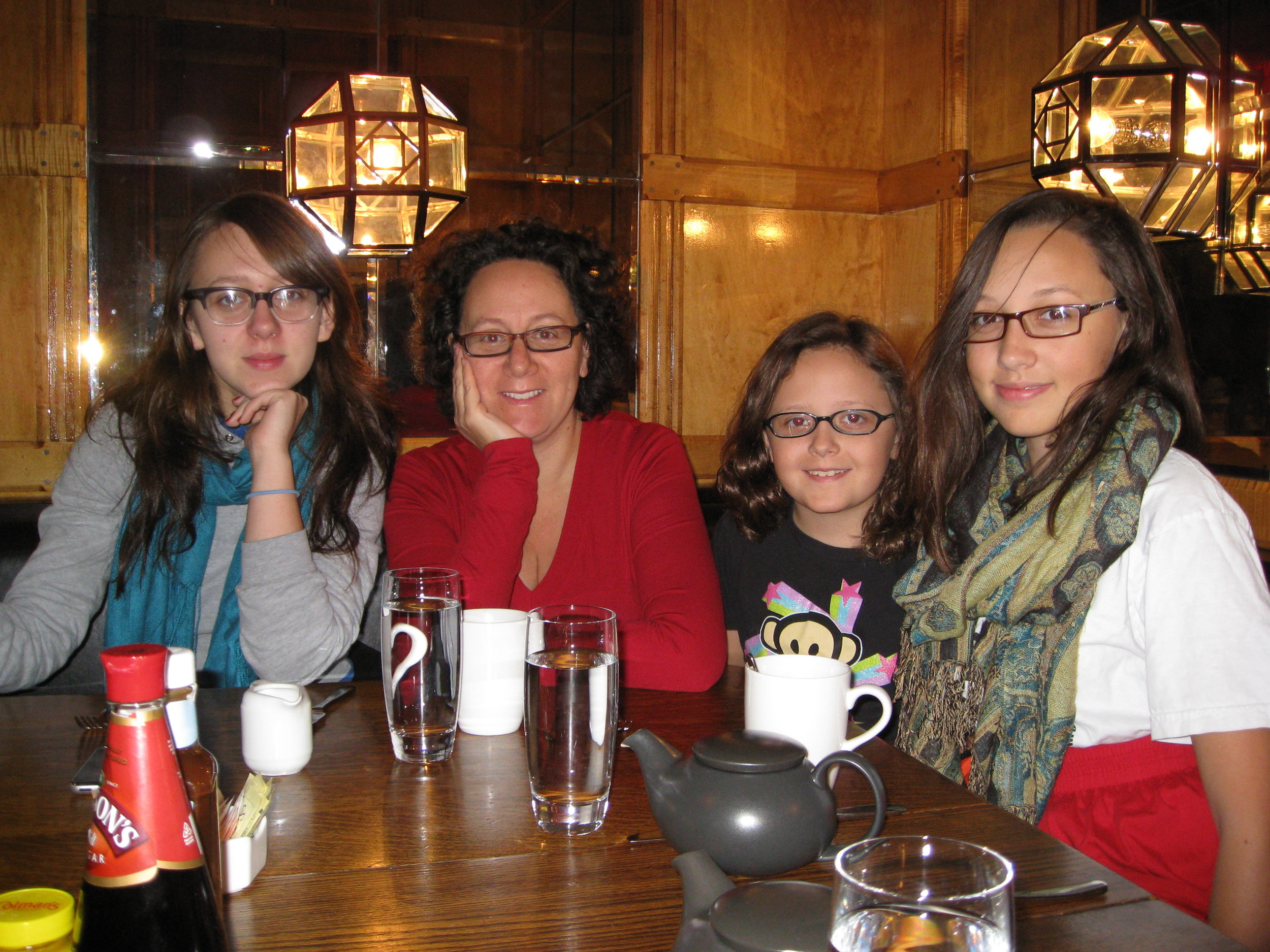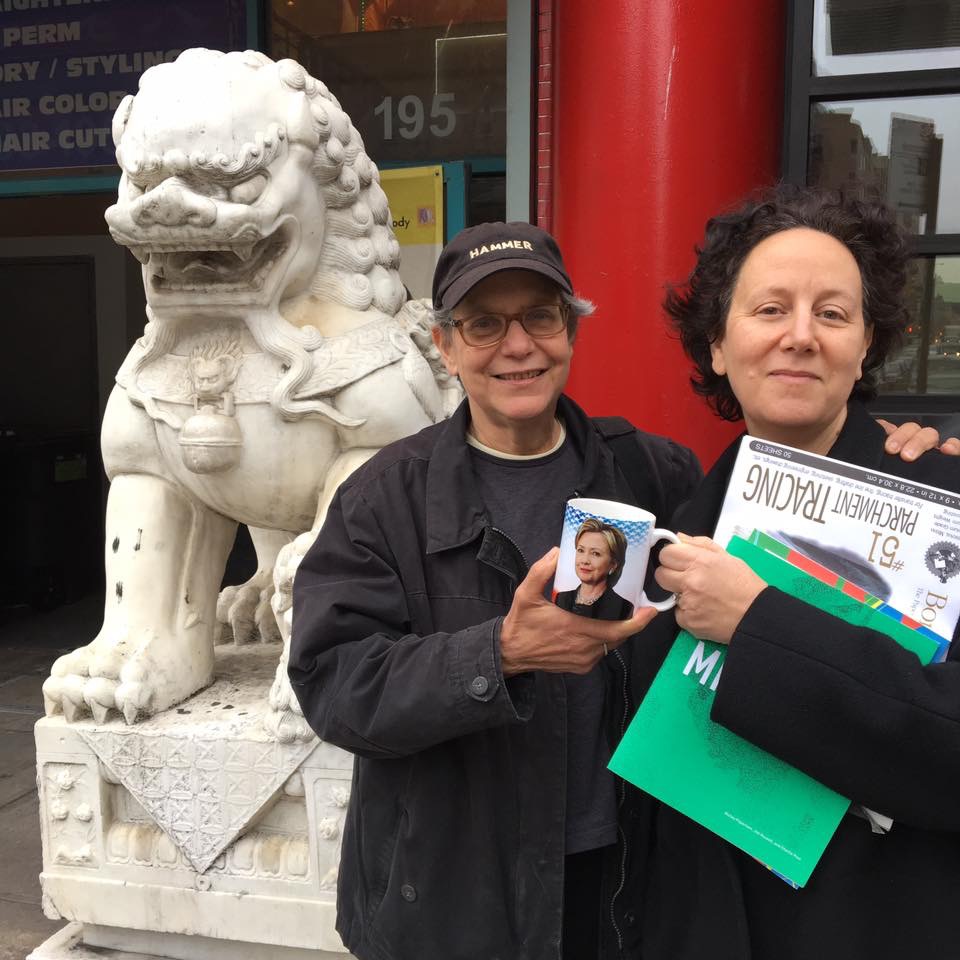Behind the Problem: Claire Weisz on People, Ideas, and Opportunities
By Julia Gamolina, cover portrait by Sioux Nesi
Claire Weisz is a founding partner of WXY, whose work as an architect and urbanist focuses on innovative approaches to public space, structures, and cities. The firm, globally recognized for its place-based approach to architecture, urban design, and planning, has played a vital role in design thinking around resiliency: combining the infrastructure of public space with working districts for and with communities. Weisz was named one of Fast Company’s Most Creative People in Business in 2017, and was most recently awarded the Medal of Honor from AIANY in 2018.
Claire co-founded The Design Trust for Public Space in 1995 and is professor of the Masters of Urban Design studio at The City College of New York Bernard and Anne Spitzer School of Architecture, Spring semester 2019. She has served as faculty at New York University’s Wagner School of Public Service, as well as Visiting Critic of Urban Design at Cornell’s College of Architecture, Art and Planning. Her practice WXY was named New York State Firm of the Year in 2016, and, more recently, ranked number eight in Fast Company’s World’s Most Innovative Companies 2019 in the Architecture category. Claire received her professional degree from The University of Toronto with Honors and her Master’s in Architecture from Yale University. In her conversation with Julia Gamolina, Claire talks about her focus on public work, advising young architects to look to solve the problem behind the problem.
JG: How did your interest in architecture first develop?
CW: I grew up in Edmonton in a very small Jewish community, and was always torn between the arts and sciences. I didn’t know what architecture was and always thought I would be a doctor because it seemed like a reasonable and challenging thing to do. My first exposure was through my neighbor in this small community who was at the University of Manitoba studying architecture.
I somehow always knew though I was interested in design, which came through different summer jobs in high school. I worked in a print company that made wedding invitations and I would design them. I then designed logos for companies at a different job. In a strange way, I understood that the world needed design, but no one in my immediate family was involved in architecture or knew what it was, so I went into university as a science student.
What did you learn about yourself in architecture school?
Even before I went to the University of Toronto, I realized that I needed to draw, so the first thing I learned was that I had to find something to study where I could do that. In the medical profession, the only drawing you could do was to be a medical illustrator - this seemed too limited, so I did some exploring and finally found architecture.
Mainly, I learned that I really enjoyed the kind of problems that architecture posed, problems like: what do we do with this town because the mine closed and no one has anything to do? Or: there are non-traditional families that don’t fit into this family unit, what kind of unit do we make for them? There are very essential problems that we as architects had to solve.
New York Magazine and Dwell host a Women in Design panel, photography by Larry Busacca
What did you do after?
The other thing that U of T taught me was that if there is no work, you move. Canada at the time had a boom-bust economy - the first summer of architecture school, I got a job with an architecture firm in Alberta, but halfway through the summer, there was a huge crash of oil in the commodity market and my job disappeared. I walked out of that office and down the street and got a job waitressing. I noticed that architects had to move around the country depending on where the work was. That set up my mentality - when I graduated, there wasn’t much work in Toronto so I moved to Los Angeles.
What were the main takeaways from your time in LA?
There was so much work there - I did some residential work, but there was also a period where I was lucky to work on a competition with Charles Moore Urban Innovations Group on a city hall complex for two urban guild buildings. This period was important for me because I realized the importance of understanding how people fit into architecture. There was an opportunity in this project for design processes to actually engage the community to work with architects to figure things out.
You then established your own practice, and shortly after went to graduate school at Yale. Tell me about this.
Yale was an introduction in a funny way to professional practice that you don’t typically get in school. I got to organize my fellow graduate students and come up with a graduate lecture series where we invited Rem Koolhaas and Zaha Hadid. Meeting both of them at a point in their careers when they weren’t as popular was really meaningful; they were having authentic conversations with a small group of 10-12 students, conversations about how hard it was to practice.
It meant a lot to have a person like Rem Koolhaas be honest about how hard it was to do work that you believed in. Challenges like spending all your money trying to get a job and ending up bankrupt - what do you do when you spend all of your money pursuing a job? He also made me realize that what you turn the work into, after you get it, is the real problem. Rem Koolhaas saw architecture and design not as a problem-solving discipline, but as a problem seeking one. That was the moment that I knew why I wanted to be an architect - I was interested in the problem behind the problem, and I had to figure out how to make a practice out of that.
“Architects are the biggest sponsors of architecture - we actually are the ones that make architectural opportunities.”
What did you do right out of Yale?
At Yale, I met Diana Agrest and Mario Gandelsonas - instead of moving back to LA, I went to work for them for three years. Diana was what we call the new formalists: the idea of shape pulling things together. I learned how important space and symbol was, and how space and ornament work together. The push at the time in California was all about the climate: low impact architecture, creating shade, an outdoor lifestyle - the opposite of what we do here in New York with winter climates. At A&G in New York, the focus was about shaping a narrative and using form and shape to pull architecture together.
How did you get back into your own practice?
We were just finishing up construction of this house in the Hamptons: multi-pavilions with a barrel vault connecting them. I was pregnant and when I had my baby, I carried my baby around with me on job sites. I didn’t want to feel guilty about being a mother and realized I would be better off going off and having my own practice.
Your practice had a few iterations - tell me about how it evolved.
My first partner, Ursula Warchol, and I met through Mario. She was his TA and had just graduated from Cooper Union. The first things we did together was work we could help build ourselves, two stores for the artist Morgan Puett. When I had a baby. Ula, or Ursula, and I hired a woman named Judy to be our shared caregiver. We created a mom co-op out of a practice.
At some point, Ula wanted to move away from doing architecture - she didn’t enjoy public clients as much. We moved into a space where Ula had her own studio, her husband had his own practice, and I had a practice. Mark was working for Pei Partnership full time, and was working night shifts with me. Soon after we became Weisz + Yoes. In 2006, Layng Pew, whom I met at Yale, joined us, and then Adam Lubinsky as a young architect who later went and got his PhD in planning. The practice became WxY, which Jessica Helfand then rebranded into W X Y.
The Morgan Puet Soho store, photography by Paul Warchol
How were you able to find work?
Some of the best things come from serendipity - finding work is a practice of remaining open. When I started the practice, I had a seemingly small and unglamorous job that was actually really meaningful; I was redoing Monsignor John J. Kowsky Plaza which is the last original remaining part of the WTC, where river water was brought from the Hudson and refiltered to cool the structure. It was essentially a roofing job, the repair of the roofing membrane.
Would you jump up and down with excitement if you got an RFP to review a roofing membrane? Probably not, but this gets back to what I learned at Yale, the idea of not prejudging any kind of problem or opportunity - there is a chance that wasn’t the real problem anyways. For me, the key to remaining calm and happy and ambitious is to stay as open as possible to ideas, people, and opportunity.
How did you get into public work?
I had decided to do so intentionally. Working for Diana and Mario, I was part of deciding with them to go after community centers - I said that we need to do this, we have to do work that isn’t for commercial purposes. I also felt I never wanted to waste material or waste opportunity - I wanted to keep things in a closed loop. As an ideology, that was important to me. I decided to work on projects that are either residential or public about avoiding unnecessary waste. It’s a huge struggle to work in such a restricted system which is the public authorities and public realms in New York, but I made that decision and just kept going.
The turning point for me has a lot to do with Deborah Berke - she was my professor at Yale. When I was finishing up work with Mario and Diana and teaching, I got a call through Deborah about interviewing to be a fellow for the Center for Public Architecture. Deborah was the senior fellow and Andrea as well, who I went on to found the Design Trust for Public Space with. That was the turning point in my life. Apparently one of the reasons I got it was because I said I wanted to give half of it out to a landscape architect - I felt the problem needed that. That theme has come up in my life before which is that if you are willing to give something away it will come back to you. It’s not such an aggressive business strategy, but it’s a position I’ve taken.
Where are you in your career today?
I’m at a point that probably a lot of other people are at: understanding that designing something at the right time in the right way for the right reasons are the opportunities that you are seeking, and that the best projects are relationships that last forever. It’s hard to get all those things to line up and takes a huge amount of work to make it happen.
I have three daughters, three other partners, and incredible directors and associates. There are also a number of people in the firm that are younger that care about practice and working as not only a project but as a place and a people. The energy was always on the projects, but now the energy is also about the people in architectural practice. How to do that really well has been the focus of the last year.
Claire and her daughters
Looking back, what have been some of the biggest challenges in your career?
Not having access to companies and people who are going to let you be their architect. There are barriers. In my opinion, it’s still a man’s world but we are changing that. I am really excited about the new additions that came out of city hall with Alicia Glen; the Bloomberg Administration, Amanda Burden, and Jeannette Sadik-Khan. They really cared about the physical environment, about having excellence and striving for something better. If you want something better, you can’t count on just the same people.
What are the biggest highlights of your career?
While I was with Mario and Diana, I applied for what is now called the New York Prize, and convinced Mark (Yoes) to apply with me even though he was working full time. That was one of those really important moments to get recognition outside of who you were working for, for what you were doing. I now recognize in introspect that in the architecture community there are a few things that have that moment for people. Winning didn't accrue to getting more work or practice or anything - what was important was feeling like you were part of a community of younger architects and practices.
Meeting Andrea Woodner was a career changing moment. She was trying to start something at the Van Alen Institute that was about public design. There were all these smart people in the public sector but they didn’t have access to use private resources to get the city of New York to be better, to be more ambitious. Having the opportunity because of her to start an organization, the Design Trust, was a real gift. This gets back to realizing that architecture isn’t just the building. It’s also the organization behind the building and how that building got there.
It gets to the fact that architects are the biggest sponsors of architecture - we actually are the ones that make architectural opportunities. Waiting for someone else to do it is not the answer - it’s us. I feel like I was given those opportunities and I try to help make more opportunities.
Andy Woodner and Claire
We talked about being open minded - what else would you say has been your general approach to your career?
I do really believe that if you work hard at something, do the right amount of research, stay open-minded, and try to see things from other perspectives, that if things don’t work out it just means that wasn’t the right time. You have to move on and assume the timing will work out differently. Work hard to set things up, but then let go of control. Most of the factors for what are going to be important for what you do are out of your control, but you still have to be open and cognizant and responsive.
“The key to remaining calm and happy and ambitious is to stay as open as possible to ideas, people, and opportunity.”
What advice do you have for those who want to start their own practice?
My advice is don’t feel forced into doing it. Architecture practice is best done in a group with lots of people. It just happens that my career trajectory was that I wanted to start that group of people. If you know that that is your personality, that’s great. Otherwise, my advice is to seek the kinds of problems that would satisfy you to work on rather than the name of the firm or what mode you want to practice in.
For example, I wanted to work on the kinds of problems that were more specific to not wasting materials and bringing architecture to places that various funding streams didn’t think were needed. I thought these areas, things like public housing, needed an architectural approach. When I reflect on it - the opportunity comes from searching for the subject and the problems you want to be involved in, not the mode of doing.
Finally, what advice would you give to those just starting their careers in the field?
I think you’re already an architect in that you’re capable of opening up dialogues to create ways to solve problems. You have to embrace the fact that you can create opportunities and solve problems that other people are not in the position to create or solve.
I’m inspired by several architects who are doing all sorts of things to solve big problems: taking steps forward to a zero carbon future, thinking about bringing food to the city, or even finding a great color for a room where you can feel really comfortable. We have to stay critical, but we really have to support each other to make things as good as they can be.
Claire and Mark in 2006, photography by Paul Warchol
This interview has been edited and condensed for clarity.





